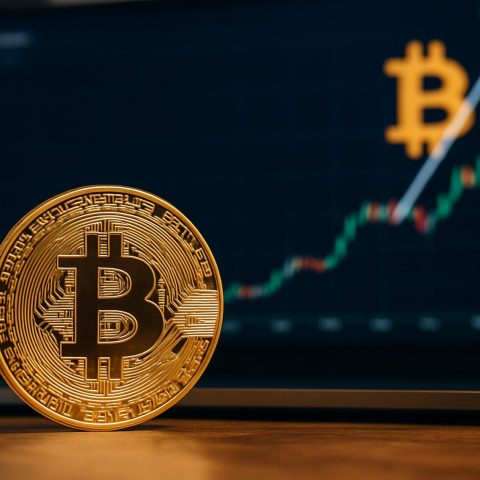How Stablecoins Like USDT & USDC Are Quietly Taking Over Wall Street—and Threatening to Disrupt U.S. Treasury Markets in 2025
Stablecoins are reshaping the $24T U.S. Treasury market, subtly shifting yields and challenging central bank control in 2025.
- $200B+ in stablecoin assets under management as of March 2025
- $40B in U.S. Treasury bills bought by stablecoins in 2024 alone
- 95% of stablecoin market share controlled by USDT & USDC
- 2-2.5 bps drop in 3-month T-bill yields for each $3.5B stablecoin inflow
The digital dollar has gone mainstream. Stablecoins—cryptocurrencies pegged 1:1 to the US dollar and backed by real-world assets—now manage over $200 billion. Their explosive rise is sending shockwaves across traditional financial markets, especially the once-boring U.S. Treasury market.
In 2024, stablecoin issuers snapped up nearly $40 billion worth of short-term U.S. government debt. That’s more than most foreign central banks, and it puts heavyweights like Tether (USDT) and Circle (USDC) in Wall Street’s inner circle—sometimes even rivaling the biggest U.S. money market funds. The magnitude of their market moves is forcing policymakers, investors, and regulators to wake up to a massive new crypto reality.
Q: How Exactly Are Stablecoins Moving U.S. Treasury Yields?
Stablecoins are flooding the short-term government debt space. When crypto markets are hot, billions of dollars flow into stablecoins. To keep their “1-to-1 dollar” promise, issuers buy T-bills and other liquid assets.
Fresh data shows: a $3.5 billion stablecoin inflow—the equivalent of just two standard deviations—can shave 2-2.5 basis points off three-month Treasury yields within ten days. Put simply, crypto demand is pushing borrowing costs lower for the U.S. government. And the effect is now similar to a mini-quantitative easing (QE) event.
Q: Are All Stablecoins Created Equal?
Not at all. The playing field is highly concentrated. Two giants, USDT and USDC, hold over 95% of the market. USDT single-handedly drives about 70% of the yield effect, while USDC contributes around 19%. These digital dollars are no small-fry—they are among the largest and most active buyers of short-term U.S. debt in the world.
Other stablecoins like BUSD, TUSD, FDUSD, and PYUSD play a supporting role, but their impact pales in comparison.
How Stablecoins Could Shake Up Monetary Policy
If the stablecoin sector keeps growing—as projections suggest, possibly reaching $2 trillion by 2028—their footprint in the bond market will expand by tenfold. In that scenario, their influence could rival, or even overwhelm, some central bank actions.
What’s at stake? Stablecoin-fueled flows might depress short-term yields so much that the Federal Reserve loses some control over the transmission of its monetary policy. This would mark a profound shift, echoing previous decades when foreign central bank flows distorted U.S. bond markets. For policy wonks—think of it as the “Crypto Conundrum.”
What Happens During a Crypto Panic or Stablecoin Run?
The risks aren’t one-sided. In stress scenarios, when stablecoin holders cash out en masse, issuers must dump Treasuries, potentially causing yields to spike. Recent data shows that outflows can move rates even faster: a $3.5B stablecoin exodus can bump yields up by 6 to 8 basis points, more than double the downward move during normal inflows.
As stablecoins become systemic, the risk of a “stablecoin run” could pose a real shock to both the crypto landscape and global bond markets. That’s why financial regulators worldwide, from the Bank for International Settlements to the U.S. Federal Reserve, are scrambling to respond.
How Are Policymakers Responding?
Transparency is the buzzword. While USDC offers granular reserve disclosures, USDT’s practices remain opaque. Regulators are considering standardizing stablecoin reporting and demanding greater clarity around their U.S. government bond holdings. Increased transparency may help lessen systemic risks, including the dangers of concentrated ownership and panic-fueled selloffs.
Meanwhile, watchdogs are eyeing the rise of stablecoins in market liquidity and repo trades—a space where split-second moves can make or break financial stability.
What Should Investors and Policymakers Watch in 2025?
- Stablecoin growth pace: Will $200B rocket toward $2 trillion?
- Market liquidity and volatility: Especially during risk-off crypto events
- Regulatory action: New stablecoin reserve standards could reshape market dynamics
- Potential spillover effects: Impact on traditional money markets and even cross-border flows
How to Secure the Treasury Market in a Stablecoin World
- Push for real-time, transparent disclosure of stablecoin reserves
- Coordinate between monetary and regulatory authorities globally
- Monitor for signs of concentrated stablecoin ownership in critical Treasury instruments
- Stress-test for redemption shocks and sudden market outflows
- Encourage diversification of crypto reserve portfolios
Bottom Line: As the line between crypto and Wall Street blurs, staying informed is crucial.
- ✔ $200B+ stablecoins now move U.S. yields—watch “crypto QE” effects
- ✔ Both USDT and USDC are driving short-term rate shifts
- ✔ Outflows may spark sudden market turmoil—be alert to crypto market cycles
- ✔ Expect tighter global regulation and push for transparency in 2025
- ✔ Keep monitoring for bigger cross-over between crypto and classic finance
Learn more about stablecoins and digital assets at CoinMarketCap and follow regulatory updates from U.S. Treasury.
Stay ahead—subscribe for updates and prepare for the age of crypto-powered finance!






